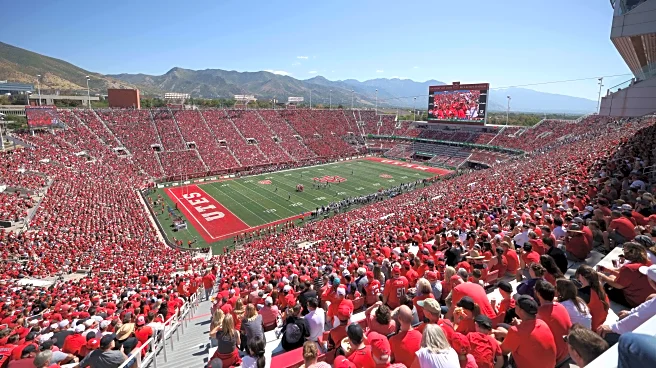What's Happening?
Gas prices in the United States are experiencing significant variation across different states. As of September 22, 2025, the national average price for a gallon of regular gas is $3.18. However, states like California and Washington are seeing much higher prices, with averages of $4.66 and $4.62 per gallon, respectively. In contrast, states such as Oklahoma and Mississippi have the lowest average prices, both under $2.70 per gallon. Mid-grade and premium gasoline prices have also increased, with national averages at $3.66 and $4.02 per gallon, respectively. Despite recent increases, prices remain lower than they were at the same time last year.
Why It's Important?
The variation in gas prices across the U.S. has significant implications for consumers and the economy. Higher prices in states like California and Washington can lead to increased living costs and may impact consumer spending. Conversely, lower prices in states like Oklahoma and Mississippi can provide economic relief to residents and potentially boost local economies. The fluctuation in gas prices also affects transportation costs, influencing industries reliant on logistics and travel. Understanding these trends is crucial for policymakers and businesses as they navigate economic planning and consumer behavior.
What's Next?
As gas prices continue to fluctuate, consumers and businesses may need to adjust their budgets and strategies accordingly. Policymakers might consider interventions to stabilize prices or provide relief to affected regions. Additionally, the ongoing changes in fuel prices could influence the adoption of alternative energy sources and electric vehicles, as consumers seek more cost-effective and sustainable options.













